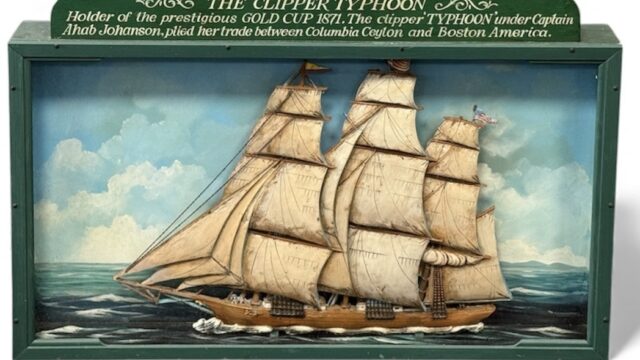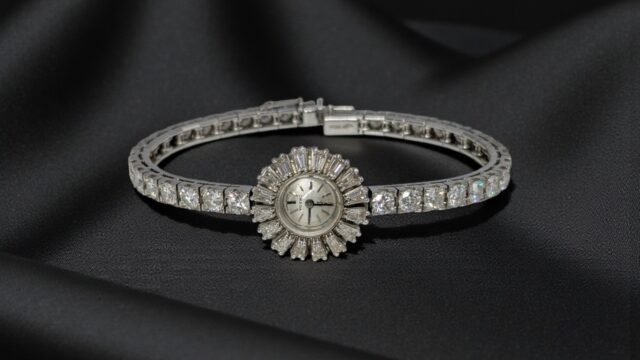Silver
Silver has long been prized as a precious metal which can be fashioned into high status objects and is one of the most popular collectables today. Its physical properties enable the skilled silversmith to manipulate the metal into a wide variety of objects, both utilitarian and decorative
When thinking about silver, it is sometimes useful to divide the vast number of objects into three general categories:
Flatware. Eating utensils like forks and spoons. Knives are called cutlery.
Hollowware. All manner of functional domestic items like plates, bowls, trays, tureens, bread baskets, claret jugs, candlesticks, goblets, teapots, cruets etc.
Smallwork. Items which can fit in a pocket, like snuffboxes, vinaigrettes, vesta cases, nutmeg graters etc.
Remember, sterling silver in the UK must have a purity of 925 parts per 1000 (.952) and will carry the sterling hallmark of a ‘lion passant’ or striding lion with raised paw. This will help differentiate it from other forms of white metal-wares like Electroplate or Old Sheffield Plate items.
Most of the antique silver that we see at Rogers Jones & Co. originates in the Georgian, Victorian and Edwardian periods (18th, 19th and early 20th C.) when the emergence of a wealthy middle class and a desire for a share of the elegance enjoyed by aristocrats of former centuries. The fashion for entertaining and interior decoration encouraged silversmiths to produce large quantities of silver eating utensils, candelabra, tureens, wine goblets, claret decanters etc. to adorn elegant dining interiors frequently complimented by Chinese porcelain and fine mahogany from the West Indies. We also see fine quality modern silver by notable designers such as Stuart Devlin and Georg Jensen.
Collectors of silver commonly focus on certain categories as the field is so vast. For example, they might collect items from a particular region or unusual assay office like Newcastle or York. Or perhaps a type of object like snuffboxes, or a maker like Nathaniel Mills, Hester Bateman or Henry Chawner.
The value of silver is based on a combination of factors which include age, style, proportion, workmanship, balance, weight, condition, maker and patina. While silver has an inherent value as a metal, many silver items available to buy at auctions are worth significantly more than the price of their scrap metal that fluctuates according to the bullion market. This is particularly the case if the item is made by a sought-after maker or has a rare or attractive design or, crucially, an early date.
The best pieces will have no damage or alteration, will retain original decoration, and carry a full set of marks grouped correctly and spaced. If considering a purchase or when considering value we need to examine the surface for changes in patination which may indicate a repair, alteration or patched on hallmark. We avoid overly cleaned objects or items that have an overly white appearance indication the use of harsh chemicals. Often, items like coffee pots or salvers (flat circular footed dishes) carry engraved armorials; these should be contemporary with the date of manufacture and can add value, however they can be added later or re-engraved, and this will be detrimental. In the same way, dedications, initials, and armorials can be erased or replaced, and this can detract from its value. Damage is most likely to occur at rims, and the joints at handles, spouts, and feet. Also raised decoration can be over polished revealing ‘pin prick’ holes in the thin metal. Lastly, like ‘marriages’ in furniture when two items are amalgamated into one, silver can be adulterated too. Common marriages include a genuinely hallmarked base or handle married to a later piece, an apostle finial mounted onto an ordinary spoon, or a spout mounted to a tankard.
Key in the word ‘silver’ to our past sales search engine and there are literally thousands upon thousands of entries. We have selected an interesting cross-section of images below, showing different price-points and a note of makers if relevant. We have included examples of smallwork, hollowware and flatware from the last three centuries.
Be sure to check out our auctions for interesting and collectible silver in Colwyn Bay and Cardiff, and feel free to ask one of our valuers for advice if you are in any doubt about an item. Or if you would just like to chat and receive a no-obligation appraisal of your silver by email, please let us know as we love to talk about historical silver.
In 1300 it was decreed that no piece of silver “was to depart out of the hands of the workers” until it had been tested and marked, in other words assayed. In 1327 Edward III granted the Goldsmiths’ Company a royal charter to assay silver articles to ensure a standard purity for all manufacturers to adhere to. The marks struck into the metal became known as a “hallmark” after the building where the Company was based, Goldsmith’s Hall in Gresham Street, London, and the standard was established as sterling or 92.5% pure, and equivalent to coinage. This system can therefore lay claim to be the oldest form of consumer protection in the country.
In the British Isles today, there are five assay offices in total located in London, Birmingham, Sheffield, Edinburgh, and Dublin. Almost all British silver is hallmarked, with a series of four or five symbols each carrying a specific meaning, and this was written into law under the 1973 Hallmarking Act.
1. The makers mark. This identifies the silversmith who made the article and usually consists of a series of letters or monogram. It is the oldest mark and was established in 1363.
2. The purity, sterling or standard mark. This is an image of a ‘lion passant’ or a standing lion with one foreleg raised. Established in 1544, replacing the older crowned leopard’s head mark. In Edinburgh, a thistle, Glasgow a ‘lion rampant’, Dublin a crowned harp.
3. The assay office mark. This is usually a pictorial symbol (see below).
4. The date letter. Indicates the date an article was marked (and usually made). The shape and font style will indicate a specific year.
5. Additional Marks. Antique silver items from the period 1784-1890, will also carry a duty mark of the sovereign’s head in profile indicating that tax had been paid. Other marks have been struck to commemorate various coronations or jubilees, and higher silver purity.
As with most antiques, marks are helpful guide only, and cannot be relied on as cast iron, and certainty are not infallible. Silver faking is a whole different topic, save to say that close study of the shapes of the shields, outlines of the punch, style of the town mark, standard mark and date letter, crispness of the marks and their placement is important so as not to be duped by the forger. To take one example, the arrangement of the marks should generally follow the shape of the item as a rule, i.e. they should be in a circle on a round-bottom item and in a line on a square-bottomed piece. Also, if an article consists of multiple parts, like a handle, lid and base, all three should have matching sets of marks (as should legitimately repaired articles). Forgers might get this wrong.
What is Britannia silver?
By the end of the 17th Century, coinage was being melted and clipped at an alarming rate, so much so that in 1696 silversmiths were forbidden to use the sterling standard for manufacture of articles. They were compelled to use the higher grade of 95.8% representing an additional 8 dwts per troy pound of silver. Therefore, a new hallmark was ordered being “the figure of a woman commonly called Britannia” with the lion’s head erased (cut of at the neck) replacing the lion passant and the crowned leopard’s head. This divided opinion between silversmiths, some complaining about the extra cost of manufacture, whilst others preferred it due the advantages in working the softer alloy. When the sterling standard weas restored in 1720, permission was granted to retain the higher Britannia standard as well.
Assay Offices, antique and modern.
Below is a list of common and rarer assay offices and a description of their marks. Collectors are often drawn to silver made by provincial makers, and a knowledge of these marks can be useful.
-London: crowned leopard’s head, without crown from 1822.
-Birmingham: anchor
-Sheffield: crown or rose from 1975
-Edinburgh: triple-towered castle or thistle from 1759
-Dublin: Hibernia from 1731
-Chester: three wheatsheaves
-Exeter: three towers joined by angled walls
-Glasgow: tree with bird, bell and fish
-Newcastle: three separate towers
-Norwich: castle gate above lion passant
-York: conjoined fleur-de-lis and crowned head, five lions
passant in a cross from 1700.
Scottish silver is particularly collectible as items can occasionally be found baring marks from places like Aberdeen, Dundee, Perth, Inverness, Montrose, Arbroath, Greenock, Tain, Wick, Elgin, Forres, St Andrews, Stirling and Peterhead.
Rogers Jones & Co. include all manner of antique and modern silver collectibles and tableware in our frequent Vintage & Antiques auctions and in our three times per year Selections & Collections auctions.
Below is a range of silver items that we have sold in recent years with prices noted.
Silver can be valued free of charge without obligation. Please contact:
North Wales - Stephen Roberts stephen.roberts@rogersjones.co.uk
South Wales - Philip Keith philip.keith@rogersjones.co.uk
West Wales - Charles Hampshire charles.hampshire@rogersjones.co.uk



























































































